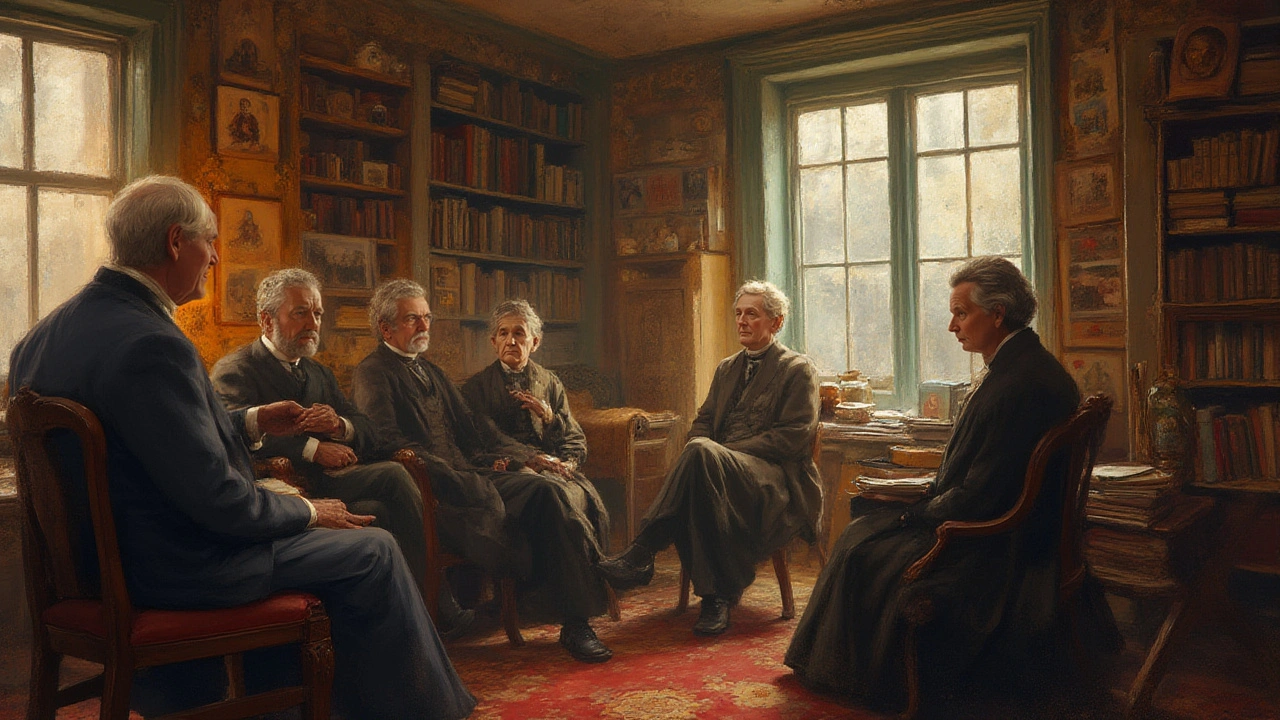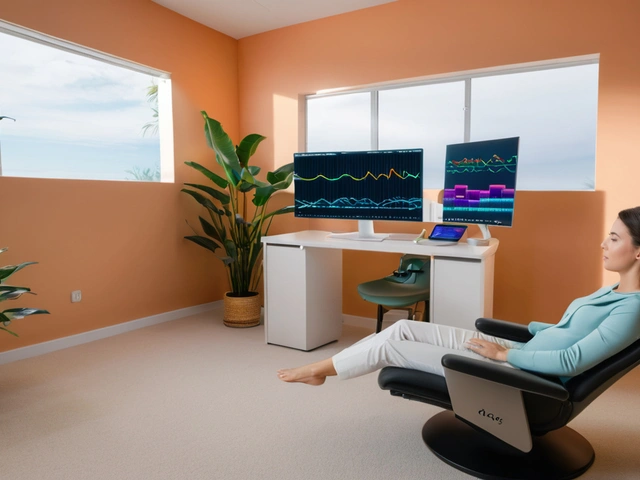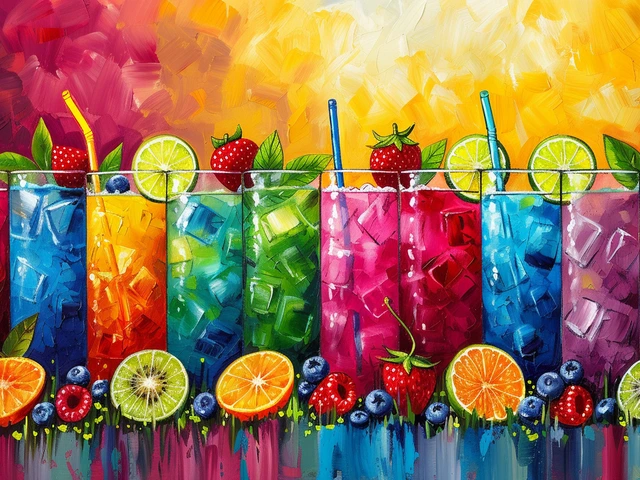
Scribbled paintings, out-of-tune singing, spontaneous dancing—these probably wouldn’t show up on a typical doctor’s prescription pad. But for a handful of daring thinkers over the past century, expressive art forms have been nothing short of revolutionary when it comes to healing minds and hearts. Imagine a time when people suffering in silence finally found ways to paint, sing, and move their way to wellness—all because a few bold pioneers believed creativity could change everything. Their stories aren’t just about art—they’re about courage, resilience, and the magic that happens when you let imagination do some of the heavy lifting.
The Early Roots: How Art Became a Medicine
Back in the late 19th and early 20th centuries, mental health care was a dark place. Institutions were overcrowded and the standard approach was more about suppression than expression. Enter Adrian Hill, a British artist who—while recovering from tuberculosis in a sanatorium in 1942—started drawing simple sketches to pass the time. He realized it made him feel better, less anxious, more alive. His attending physician took note, and soon Hill was encouraging other patients to take up drawing and painting. This quietly sparked a movement: the first rumblings of creative arts therapies as a legitimate form of treatment.
At practically the same time, across the Atlantic, the roots of music therapy were starting to grow. During World War I and World War II, hospitals filled with wounded soldiers. Nurses and volunteers noticed that playing live music—whether on a battered piano or with a small string trio—had a calming effect on patients. In the U.S., this phenomenon gained credibility when Michigan State University established the first degree program in music therapy in 1944, an insight drawn directly from battlefield experiences.
But really, the idea goes even farther back. In 1789, Benjamin Rush, considered the 'Father of American Psychiatry,' advocated using music as a tool for healing and mood management. Not everyone took him seriously, but his daring vision paved the way. The early years were about testing boundaries—sometimes in psychiatric wards, sometimes in schools for children with developmental disabilities, and even in prisons. Rather than talking in circles about their pain, people could create, shout, and draw it out. The pain got a voice, and that made it easier to bear.
It didn’t hurt that a few well-known creative figures also supported the movement. Carl Jung, the famous Swiss psychoanalyst, often had his patients draw and paint as part of their therapy. He argued that images revealed important subconscious symbols—like little windows into the soul. This wasn’t just nice in theory: it led therapists to take art and creativity seriously, studying how people’s drawings changed as their mental health improved. In the 1940s, Margaret Naumburg—a psychologist who taught at the Walden School in New York—began calling her approach 'Art Therapy,' helping school children with emotional difficulties by encouraging expression through painting and sculpture. Her book, 'Dynamically Oriented Art Therapy,' published in 1966, remains a classic.
By the early 1950s, the trickling of innovation had turned into a stream. Hospitals around the world started bringing in art and music practitioners—not just as comfort, but as core parts of treatment. Early data suggested patients who engaged with art had better recovery outcomes. The message was becoming impossible to ignore: this wasn’t just a feel-good sideline, it was therapy that worked.
The Innovators: Who Led the Charge?
Let’s put some faces to these game-changing ideas. Margaret Naumburg is still called 'the mother of art therapy' for a reason. She believed that people could bypass the filters of language and access deeper feelings through art, letting subconscious thoughts come to light. Naumburg had guts—she championed her brand of psychotherapy in a time when the field was swamped by stuffy Freudian doctrines, insisting that adults and children alike could unlock pain, joy, and healing through clay, crayons, and charcoal.
Another key player, Edith Kramer, was also an artist with a psychology background. She argued that art could actually help repair the ego and soothe the mind—not just surface-level entertainment, but deep work that engaged our most basic coping skills. She wrote, “Art is a healing force that blends fantasy with reality, injury with integration.” Kramer based her therapy style on art’s drive to heal rather than just analyze, focusing on the process, not the product.
Music therapy has its own cast of trailblazers. E. Thayer Gaston, often called “the father of music therapy,” started his pioneering research in the 1940s. He studied how different types of music affected moods, memories, and group dynamics and pushed for the professionalization of the field. One little-known fact: Gaston’s students had to perform practical music sessions for real patients as part of their training. It wasn’t just about reading studies—it was about seeing the effects firsthand.
Then there’s Paul Nordoff, a noted American composer, and Clive Robbins, an educator. In 1958, they developed what’s now called the Nordoff-Robbins approach to music therapy. Their method was playful and experimental, letting children with disabilities improvise with rhythm and melody. There’s a legendary story about a girl, considered unreachable and non-verbal, who joined in a drum circle. Over weeks, she began to respond and eventually express herself through musical gestures. Stories like this popularized music therapy in schools and special needs programs around the world.
Drama therapy also burst onto the scene in the 1960s and 70s. Jacob L. Moreno, a psychiatrist and theater lover, invented 'psychodrama,' where patients acted out their issues on stage. What sounds like improv night gone wild proved powerful—people could 'step out' of toxic roles from their daily lives and test new ways of being in a safe environment. His student, Renee Emunah, later refined a holistic process using everything from roleplay to mask-making, bringing deep healing to clients who struggled with anxiety, PTSD, and social isolation.
Dance/movement therapy sprang from a similar place, led by Marian Chace, a dancer-turned-therapist who believed the body could express truths the mind might suppress. Chace’s early clients were psychiatric patients at St. Elizabeths Hospital in Washington, D.C. She had them move to music, mirroring their gestures and responding with encouraging rhythms. When their moods lifted and anxieties eased, hospital staff finally saw that movement might just be the secret sauce for some patients.
So, from vivid painting to spontaneous improv, these pioneers didn’t just invent new therapies; they created new ways for people to be seen and heard. Their daring pushed the boundaries of what healing could look like, replacing silence and shame with creativity and connection.

Breaking Barriers: How Creative Arts Therapies Became Recognized
All this innovation didn’t mean instant acceptance. Creative arts therapies faced lots of skepticism for decades, especially from old-school psychiatrists and medical administrators. Many dismissed art and music as 'unscientific,' useful only as hobbies. The early pioneers had to fight for their work to even be recognized as legitimate. A good example? Margaret Naumburg took to the lecture circuit in the 1950s, arguing tooth and nail with hospital boards that art therapy produced measurable mental health benefits—and she brought patient drawings as proof.
Luckily, the 1960s brought a wider cultural shift, giving creativity and emotion more room to breathe. University programs for creative arts therapies began popping up, and the very first professional organizations—like the American Art Therapy Association (AATA, founded in 1969) and the American Music Therapy Association (founded in 1950 as the National Association for Music Therapy)—laid ground rules and educational standards. It wasn’t all smooth sailing. Many therapists had to work double duty, proving their worth not just to patients but to skeptical administrators weighing budgets and traditions.
By the 1970s and 80s, data was pouring in. Controlled studies started to show that patients involved in creative arts therapies experienced faster recovery times, danced through depression with fewer relapses, and reported feeling more emotionally connected. A big plus: these therapies work for kids, adults, and seniors alike. Hospitals got bolder, integrating art rooms, music classes, and drama groups into psychiatric wards, pediatric cancer centers, and later, even dementia units. This led to insurance providers (slowly) considering coverage for creative arts therapies, legitimizing these fields further.
People also started noticing the ripple effect. One landmark project in a New York hospital demonstrated that art therapy sessions didn’t just help the patients—they reduced staff stress, too. Nurses and doctors felt more upbeat, team morale improved, and even patient families started joining sessions. A Boston hospice reported that music therapy brought comfort not just to the dying, but also gave loved ones a way to share grief and memories through song. These weren’t just feel-good anecdotes; major hospitals published studies in peer-reviewed journals, cementing the therapies’ reputations for clinical value.
Since the 1990s, technology has changed the landscape once more. Digital drawing tablets, virtual reality art environments, and music-creation apps have allowed therapists to reach clients worldwide. During the COVID-19 pandemic, online group sessions kept people connected and creative, even during lockdowns. A tip: Many art therapy resources and introductory group sessions are now free online for anyone curious about exploring their therapeutic side at home.
The Modern Landscape: Impact and Inspiration Today
Fast-forward to now—creative arts therapies sit in a pretty sweet spot. Hospitals, universities, and community centers across the globe hire certified specialists in art, music, drama, and dance/movement therapy. These programs serve everyone from young trauma survivors to older adults with dementia. The beauty is in the flexibility: a music therapist might guide veterans through songwriting to process PTSD, while an art therapist could help a teen channel anxiety into a vibrant painting. The methods have grown much more sophisticated, blending neuroscience with creative exploration. Some therapists now use brain imaging to show exactly how art or music lights up regions linked to emotional regulation and memory.
Research also shows that creative arts therapies help people who struggle to express themselves with words, be it kids with autism or adults facing language barriers after a stroke. The therapist acts as a guide, not a critic—focusing on process, not perfection. Want to try it yourself? The modern consensus is that you need zero experience; the goal is expression, not gallery-worthy art. Next time you feel stressed or stuck in a rut, try ten minutes of free drawing, dancing to your favorite song, or humming a simple melody—bonus points if you’re brave enough to share the results with someone you trust. Studies say you’ll likely notice a lift in mood and a drop in anxiety.
One of the coolest parts: creative arts therapies are now part of disaster response and refugee support around the world. After traumatic events—think earthquakes or war—teams of therapists bring mobile art and music workshops to kids who have lost homes or family. They draw, drum, dance, and tell stories, giving pain a safe outlet and planting the seeds for hope. Art therapy’s reach even extends to the workplace. Some companies now offer regular group art sessions to boost creativity, empathy, and team unity—kind of a stress-busting hack for office life.
And here’s a practical tip: anyone can inject some of this healing energy into daily life. Join a beginner’s art class, improv troupe, or drum circle in your community—even if you think you’re hopelessly untalented. The science says your brain (and your heart) will thank you. If you’re looking for something bite-sized, try coloring apps or online doodle tutorials. There’s no such thing as “bad art” in therapy. It’s the act of doing, not the end product, that delivers the magic.
The creative arts therapies were once written off as frivolous, but those early pioneers proved them otherwise. Today, their ideas have changed countless lives, with the ripple effects still growing. Every sketch, song, and step forward stands as a tribute to those who dared to believe that healing could—and should—look a lot more colorful.





